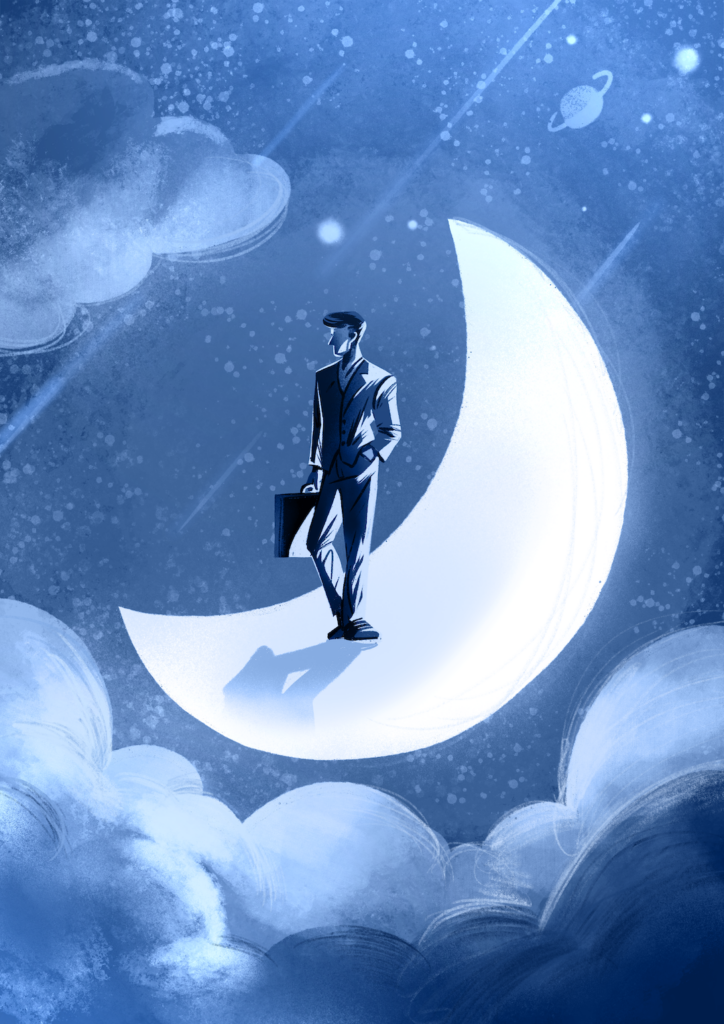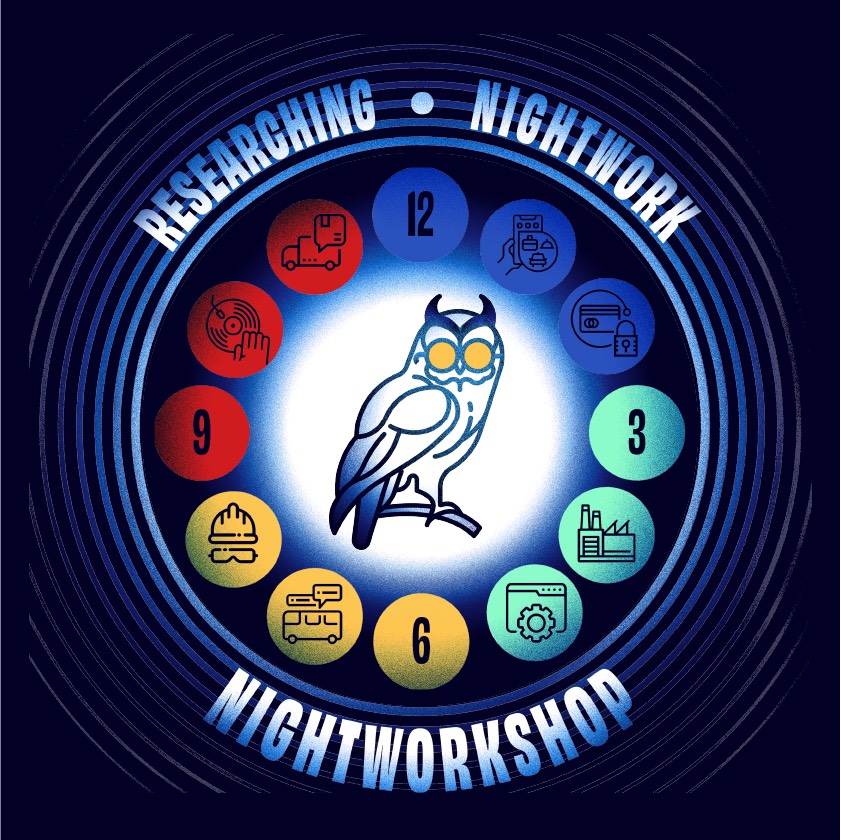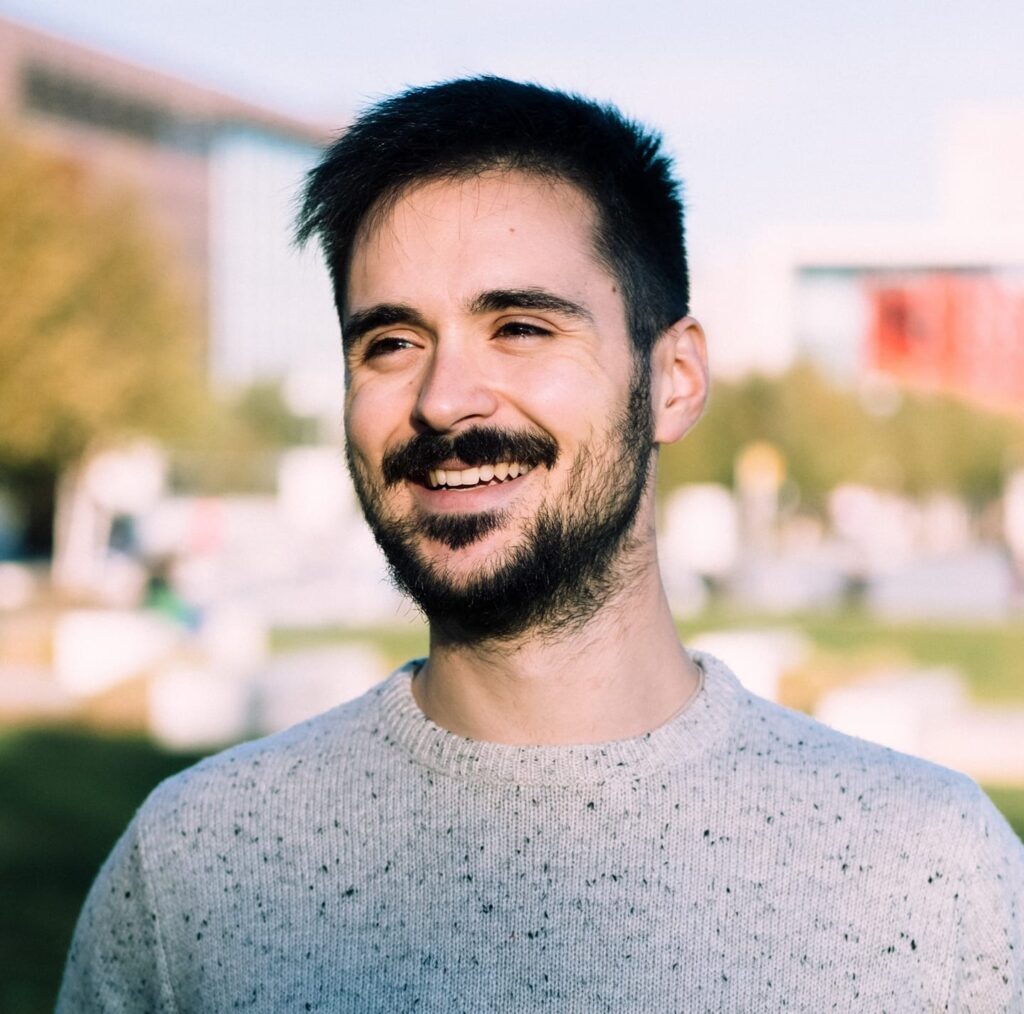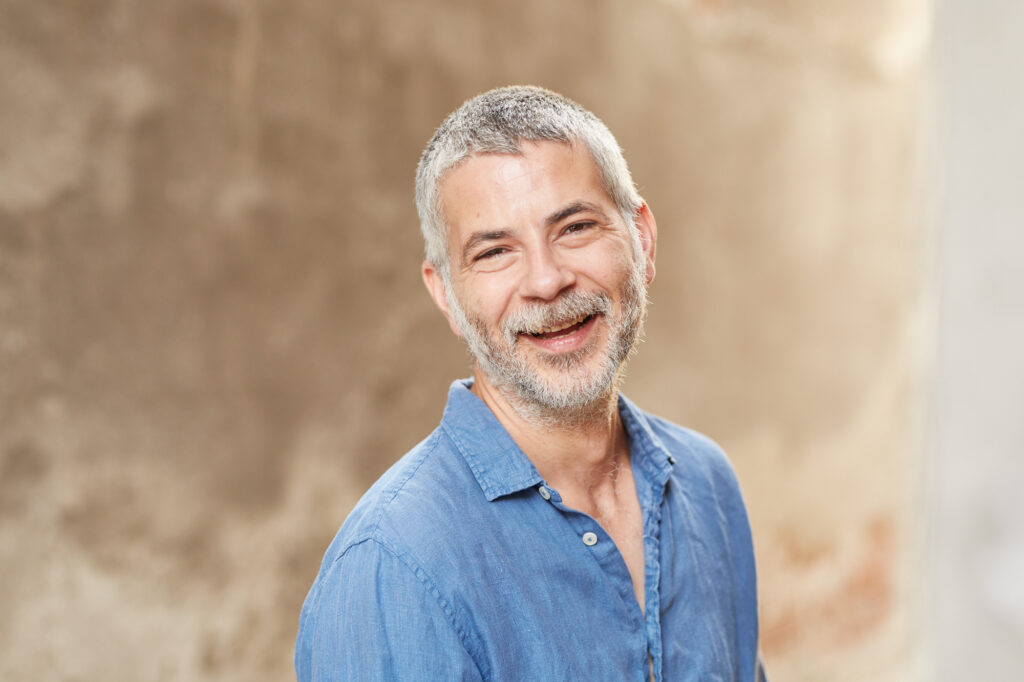
Illustration by Alex Săvescu
The Nightshift
Julius-Cezar MacQuarie
Abstract
Most ethnographic research projects are conducted during the day. But how suitable is such a work schedule in global cities that operate twenty-four hours a day, seven days a week, or where potential interlocutors work during the night? Researching at night, as I found out, is not very suitable. So for some time now, but especially while researching the labour opportunities of migrant manual workers in London, I have been developing a set of methods for doing ethnographic research during the night. I started from classic ethnographic methods, such as participatory observation and free or semi-structured conversation and then used a type of body-mediated ethnography. I used various digital applications and cyber tools to monitor, evaluate, and translate into infographics both my own sensory experiences and the participants in my research. After a year in New Spitalfields, a night market in London, I understood in my own body how precarity takes a corporeal form. In this piece, I therefore try to articulate in writing the bodily experiences of pain and exhaustion along with the isolation and social alienation from both society and their own families that these night workers feel night after night. Through this mode of night-time body-mediated ethnography, my contribution to the specialist discussions about the precariousness of manual labour conditions consists in pointing out the aspects of the highest degree of existential precariousness.
AnthroArt Podcast
Julius-Cezar MacQuarie
Author


As a night ethnographer and migration scholar, for the past decade Julius-Cezar MacQuarie has reached out to migrant nightshift workers working around the clock in European cities, because he is concerned with their invisibility from public debates, political agendas, and scholarly fields. Dr MacQuarie was awarded a Marie Skłodowska-Curie Actions (MSCA) Research Fellowship to carry out research on precarity in women migrant nightworkers in Ireland (PRECNIGHTS). PRECNIGHTS is hosted by ISS21 Migration and Integration cluster, University College Cork. You can contact him at: imailfromdrjc@gmail.com / jcmacarie@ucc.ie and tweet away @precnights / @tweetsfromdrjc.
Alex Săvescu
Illustrator

Well, hello there! I’m a fancy-schmancy illustrator and designer currently rubbing elbows with the artsy crowd at HLabs in London. In addition to my day job, I also run my own small design studio back in my homeland of Romania. What can I say, I’m a multitasking machine! I like to think of my studio as my little side hustle, or as my grandma calls it, my “extracurricular activity.” But that’s not all – I also dabbled in the world of academia as a visiting lecturer at Coventry University. I loved imparting my wisdom on the young and impressionable minds of tomorrow – or at least, that’s what I told myself while grading endless piles of papers. All in all, I’m just a creative soul trying to make my mark on the world – one whimsical design at a time. Who knows, maybe one day my art will be hanging in fancy galleries across the globe, or maybe it’ll just end up on a refrigerator somewhere. Either way, I’m having a blast doing what I love!
Daniel Popa
Actor

Daniel decided to become an actor so that he could experience feelings and events that otherwise won’t fit in one’s lifetime. He collaborated with Bulandra Theatre and the Monday Theatre @ Green Hours and attended many national and international festivals. Since 2013 he plays in projects written, translated, or directed by himself and produced by his Doctor’s Studio Cultural Association which he also founded. Daniel doesn’t know if this is the way to approach new forms of artistic expression, what’s certain is that he distances himself from the old ones.
The nadir point stands for the lowest level of activity of the human body during the twenty-four-hour biological cycle. It varies from one individual to another, but one could reach this point somewhere between two and six a.m. During that time, I often felt like I was losing my balance and my whole body was going numb. There were strange sensations, physical and mental, as if the ground was running away from under my feet, as if I could hear my body “screaming,” I wanted so badly to stop and lie down, but I couldn’t because I had to carry crates and bags, several times with a client on my trail. I heard about the nadir point and experienced it for the first time in my life during nightshifts and night ethnography.
Most ethnographic research projects are conducted during the day. But such an approach is less suitable for understanding societies that operate “24/7” (twenty-four hours per day, seven days per week). For some time, but especially while researching night manual labour, a precarious form of labour that ensures the continuity of contemporary capitalism, I began experimenting with different methods of conducting ethnographic research during the night.
I started from the most common ethnographic method, participatory observation to which I added corporeal, temporal and audio-visual components as my research advances. I got a job as a porter in London’s New Spitalfields night market, UK’s largest fruit and vegetable market. I worked six nights a week for seven months, nightshifts starting at ten p.m. and lasting from nine and a half to sixteen hours. Then I worked another two months in a coffee shop, also at night, observing the market from the perspective of those who supported the manual workers socially—with equally tired smiles—and food—in fact, more with energy drinks.
When you’re only doing the nightshift, your everyday life is very different; you live according to the rhythms opposite to those of a society that works during the day and sleeps at night. While I worked the nightshift, the nocturnal rhythm required me to be alert and active at night and sleep during the day. The nocturnal sleep of seven-eight hours was replaced by four-five hours of daytime sleep I got up in the evening, not in the morning, and worked at night. My meal times were reversed, and my appetite decreased. I started having my first meal around midnight, then if the very alert pace of work allowed me, I would have a snack around –two or three a.m. Many times I ate on the go, or rather on the run, because it was crowded, the company I worked for had no space where the porters could eat, and there were no clearly defined breaks that the management respected. After one or two hours of commuting back home, I would have my first meal at around lunch time, not sure if it was lunch or breakfast. I only had Saturday night off, and I sometimes slept until Sunday afternoon, which was rare for me before I changed my circadian rhythm. I spent my nights at the frantic pace imposed by market traders, walking an average of 8.2 kilometers per night within the market, and covered a total of 2,310 km during my year of nocturnal ethnography research at New Spitalfields market, on nightshifts only. I drank, like all the other workers in the market, a lot of energy drinks. I worked around sixty-three hours a week (77.4 hours away from home, including travel time, averaging 2.4 hours each round trip). In contrast, the legal full-time limit of working hours (for manual workers) is up to forty hours per week, from Monday to Friday, in eight-hour shifts.
In the case of a porter, his body is the main tool for performing the work. Every night, I lifted and carried around 500 kg of fruits and vegetables, if not more. In addition, I handled and pushed a manual forklift loaded with pallets of one or two tons of goods. Measurements with the Pacer Pedometer digital app, video recordings and field notes indicate that I began to feel the effects of these changes physically and mentally from the first month in the field.
I include here three vignettes from my field diary, one about the first nightshift, the second about the “hysteresis effect” [1], and the third about the longest night market shift.
Vignette №1
January 29, 2015
New Spitalfields, first nightshift
Time slept during the day: 4.5 hours
Distance covered during the night: 13 Km
Duration of the nightshift: 9.5 hours / 01:00 – 10:30 a.m.
Shuttle duration: 1 hour and 50 minutes each way
I’m doing well during the nightshift considering that it’s my first. However, after the journey back from the market, I feel my mind and body slowing down. It’s 11:55, I’m getting ready to eat breakfast around lunchtime for the regular people, and I’m just thinking about how to eat faster so I can get into bed and sleep. Still, I’m super happy that I managed to stay awake on my first nightshift, and then travel home for over an hour without falling asleep on the bus or subway.
Vignette №2
February 29, 2015
New employer
Time slept during the day: 4.5 hours
Distance covered during the night: 15 Km
Duration of the nightshift: 9.5 hours / 01:00 – 10:30 a.m.
Shuttle duration: 1 hour and 40 minutes each way
It’s Sunday evening, and I’m getting ready to leave home for my first nightshift with the new employer. In the living room, my flatmates, an Italian couple, an Austrian, and a Polish, are preparing to serve dinner. A friend came from France to visit her friends in London, including me. I grip the handlebars tightly as I wish them “bon appetit.”
Tonight’s scene, two months after starting the field, made me feel more acutely than ever the isolation and the lack of socializing with the people I knew before starting the research. Since becoming a nightshift worker, I have had to constantly turn down invitations from my flatmates and London friends that I knew prior to this research.
Vignette №3
April 29, 2015
Still awake. I hacked into the nadir point
Time slept during the day: 4 hours
Distance covered during the night: 16 Km
Duration of the nightshift: 11h / 11:00 p.m. to 09:00 a.m.
Shuttle duration: 2h round trip
Most sales take place between midnight and three a.m. Afterwards, the pallets are moved from the central aisle to the company’s stand, covering it almost entirely. Porters are already tired. This is the nadir time, when people are at the lowest energy level in their twenty-four-hour circadian cycle. However, in the market, three a.m. has its own rhythm, with supervisors and managers forcing the manual laborers to continue working. The remaining orders are processed, and the goods prepared and sent to the customers. The nadir point is completely ignored. Any last bit of energy left in the workers’ bodies must be squeezed out, as far as the employers are concerned.
I fell off my feet a few times because my knees gave way and my legs buckled against my will. My eyes closed as I sat and read out loud a customer’s order who then asked me if I was okay. But after a few months of working the nightshift, it was easier to bear, and I had learned a few tricks from my colleagues on how to get through the nadir. But that unmistakable nadir lethargy occurred every morning between four and six a.m., in my case. I often experienced loss of balance during that time. I was recovering only at the crack of dawn.
When I started working the nightshift in the market, I weighed 83.2 kilograms. After a month, I reached 79.4 kilograms. My body only partially adapted. It was like a physiological shock to my system. Not only did I reverse my behaviour and daily habits, but also the shock that I felt in my body, night after night. I remember the pain I felt when I overloaded my body with weights that put pressure on my joints, muscles, and ligaments. I can still see my palms and fingers swollen and bruised from grabbing, twisting, and lifting packages and crates. I can still feel the dry skin on my hands, peeling around the cuticles, because I was handling the packaging without gloves. Wearing gloves in this masculinised workplace would have been a sign of weakness, which I tried to hide despite the constant discomfort. I felt pain physically, as well as mentally. I had started to fear the break, because during a break of fifteen to twenty minutes the body would relax and refuse to re-adapt to the alert rhythm after the break. It refused the pain. Resuming work after the break was always very painful, even more painful than if I had worked continuously. The same thing happened when I took a week off to do a forklift driver course. On the one hand, I rested, and it was good, on the other hand, after returning to the porter’s rhythm I felt torn and crushed by the 500 kg of crates of vegetables and fruits that I usually carried in one night.
Isolation and social alienation followed the physiological shock. I became a kind of ghost, too tired to live up to social expectations or want to have a social life anymore. And I also disappeared from the social horizon of many because I lived on a different rhythm than theirs. I experienced what Bourdieu [1] calls the “hysteresis effect”—a maladapted habituation to events or experiences felt by nightshift workers in call centres in India who work for customers in the US whom they never physically meet. I felt the absence of loved ones and acquaintances whom I could not see throughout that year, even though we lived in the same time zone, with the same magnitude. One of my new work colleagues, a porter in New Spitalfields like me, said to me “people are not made to work at night. They are made to work during the day.”
I fully experienced this strange sense of isolation from the people I knew before I began my nocturnal ethnography. When they ate their dinner, I prepared my lunch. When they went out, I went to work. On Sundays, when they barbecued in the garden, I would sleep to recover from a week of work and prepare myself physically and mentally for the next. If I went to dinner, I had to try not to fall asleep in the middle of a conversation. If I wanted to participate in some social or cultural event, I was always on the run. I heard and saw nothing of what happened in London during that year I did ethnographic research at night.
And I noticed week after week how on Sunday evenings my colleagues, especially those who had families, returned to work already tired. They were spending their only day off, Sunday, with their family. But the price they paid was very high, they felt it physically every week in their exhausted bodies. A colleague told me that “night work eats away at your life, without knowing it, without living it, the years pass you by.”
After a year in New Spitalfields, I understood in my own body how precarity takes a corporeal form. My contribution to the specialist discussions about the precariousness of manual labour conditions consists in pointing out the aspects of the existential condition of precariousness. In this piece, I therefore try to articulate in writing the bodily experiences of pain and exhaustion along with the isolation and social alienation from from both society and their own families that these night workers feel night after night. Some, especially migrant workers, feel them year after year, because they do not have the cultural and social capital to get out of the trap of the nightshift.
These experiences are produced by the contemporary system of capitalism, which knowingly manipulates the human twenty-four-hour circadian rhythm, squeezing the last drop of energy from exhausted bodies in the rush to accumulate capital. But for the surrounding society, these experiences remain unknown. Even though nightshift workers are indispensable in a society that consumes and produces incessantly, they remain invisible, hidden to the eyes and minds of people who live their lives according to natural circadian rhythms.
We would like to thank Ioana Miruna Voiculescu for her useful proofreading and suggestions to ensure style consistency and improve readability across the texts published in English.
References
[1] Bourdieu, P. 1990. The Logic of Practice. Stanford: Stanford University Press; Bourdieu, P. 2000. Pascalian meditations. Stanford: Polity Press.
